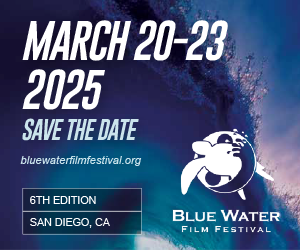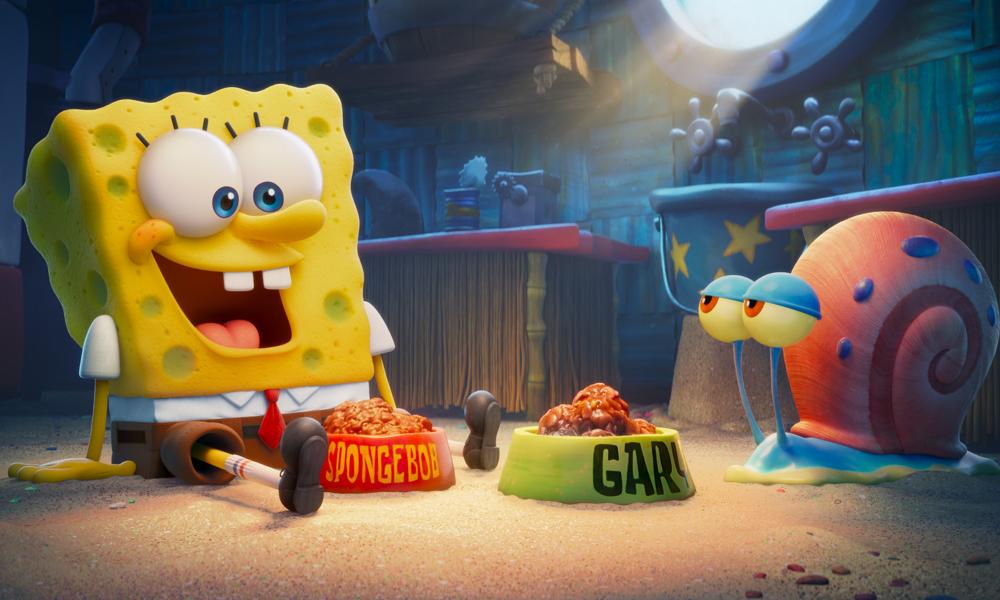***This article originally appeared in the June-July ’20 issue of Animation Magazine (No. 301)***
There are not many animated characters that can still inspire the kind of devotion SpongeBob SquarePants does after 12 successful seasons on the air and two hit movies. Created by Stephen Hillenburg, who died in 2018 after a battle with ALS, the beloved yellow character and his Bikini Bottom pals are ready for another feature adventure this summer in The SpongeBob Movie: Sponge on the Run.
The new outing centers on SpongeBob’s search for his lost pal, Gary the Snail, who has been abducted by King Poseidon. Along the way, SpongeBob and Patrick (voiced hilariously as usual by Tom Kenny and Bill Fagerbakke) travel to the lost city of Atlantis to track down the good gastropod. In addition to Kenny and Fagerbakke, the movie also features the rest of the show’s original voice cast (Roger Bumpass, Clancy Brown, Mr. Lawrence, Jill Talley, Carolyn Lawrence) as well as some surprising live-action star turns from Snoop Dogg, Keanu Reeves, Awkwafina and Reggie Watts.
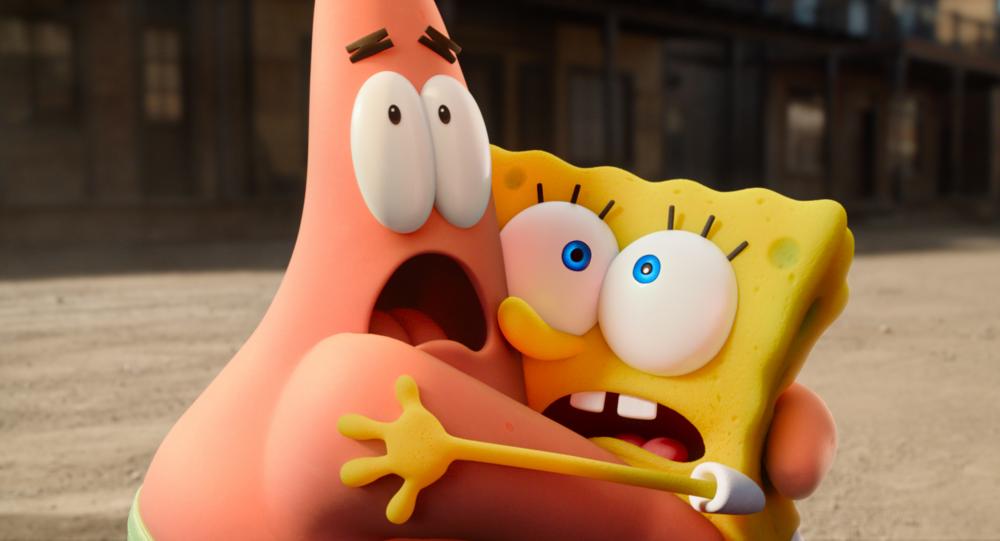
This third movie in the SpongeBob cinematic experience is animated by the team at Montreal-based Mikros Image, and is co-written and directed by Tim Hill, a veteran of the TV show and the first SpongeBob movie, whose credits also include Garfield: A Tale of Two Kitties (2006), Alvin and the Chipmunks (2007), Hop (2011) and Grumpy Cat’s Worst Christmas Ever (2014).
Hill, who met Hillenburg when they were both working on Rocko’s Modern Life in the early ’90s, says he was drawn to the new movie because of its clever storyline and characters. The director met up with a group of SpongeBob series veterans and Hillenburg to explore fresh ideas for a third movie featuring the character. “I was asked to put together an outline, and then asked to take a stab at the script, and eventually they asked me to direct the movie,” recalls Hill. “The studio had plans for a different version of the movie, but that one was scrapped. Steve was always a fan of grounded, relatable and simple stories. I think the previous script was a bit too far-fetched. So we opted for this story which is about SpongeBob losing Gary as he’s kidnapped by a very vain King Poseidon (voiced by British comic Matt Berry) who uses snails to make his skin shiny and young.”
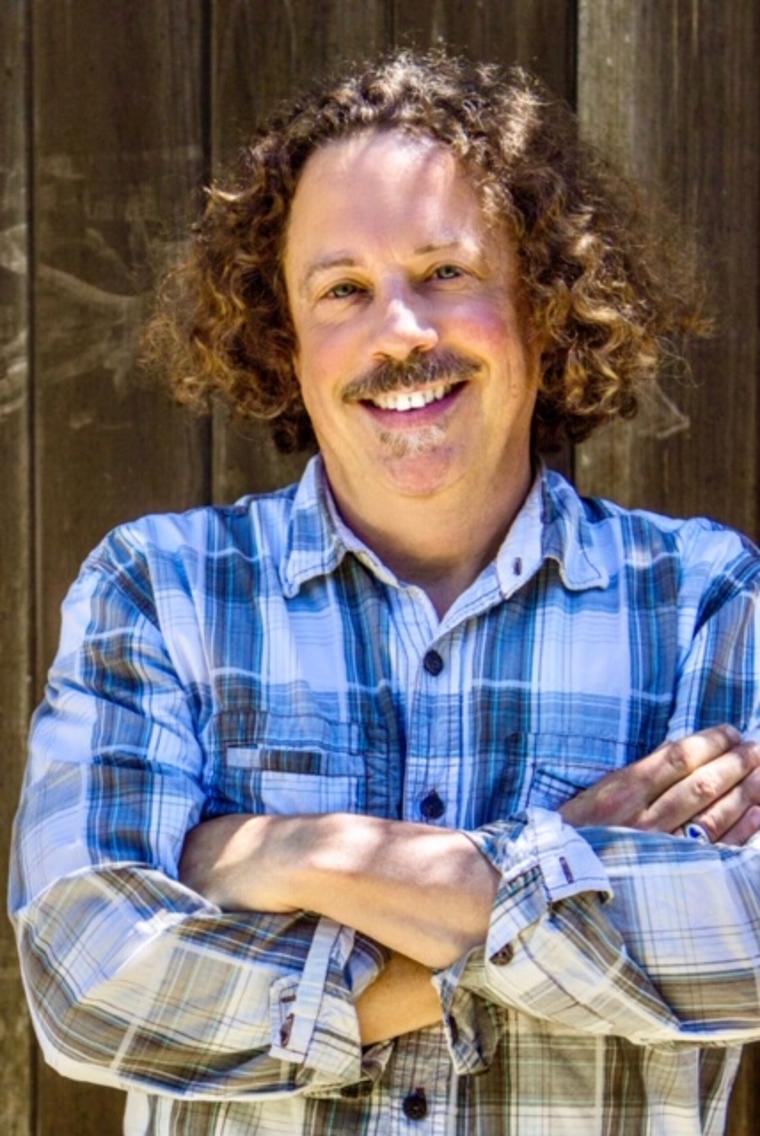
An Homage to Hillenburg
The director says the film’s story is very relatable as everyone can identify with losing a pet or a good friend. “I think it has a great theme and is built as an homage to Steve Hillenburg,” he notes. “Everyone comes together to help SpongeBob because of all the things he has done for them. We thought in a way it’s about what this character has meant to people over the years. It’s a celebration of creativity and humor, and by extension, it’s an homage to what Steve gave to all of us during his lifetime. That’s why I wanted to do the movie, because there was something deeply personal about it, which goes beyond just having a great story and memorable characters.”
Hill says he cherishes some great memories of working, hanging out and going to the movies with Hillenburg. “I met him when we were both in our 20s. When I look back, it’s Steve’s art and sense of humor that really stand out for me. I loved his perspective and ironic sense of humor. He loved art and movies. We used to catch revivals of movies of the silent classics … Buster Keaton, Harold Lloyd, Charlie Chaplin. We went to animation retrospectives, National Film Board of Canada shorts. He would play guitar and we would all jam in his office. He painted, too. He was a real Renaissance man.”
The helmer says in the earlier stages of development, there were questions about whether to take the traditional 2D approach or push for a CG-animated movie that wouldn’t “break” the look audiences associate with SpongeBob. “Sometimes, I feel that CG doesn’t always serve human characters very well,” says the director. “During our development period, we took a lot of time looking at old clips from the first SpongeBob movie and translating them to CG. We tried a lot of approaches, but I think we ended up with a great solution. It feels a little bit like stop-motion; it’s snappy and more forgiving than general CG. It’s like film animation, we did it on ones and twos (one frame of film per movement or two frames of film). In that way we got the animation to look similar to what we’re used to on the show.”
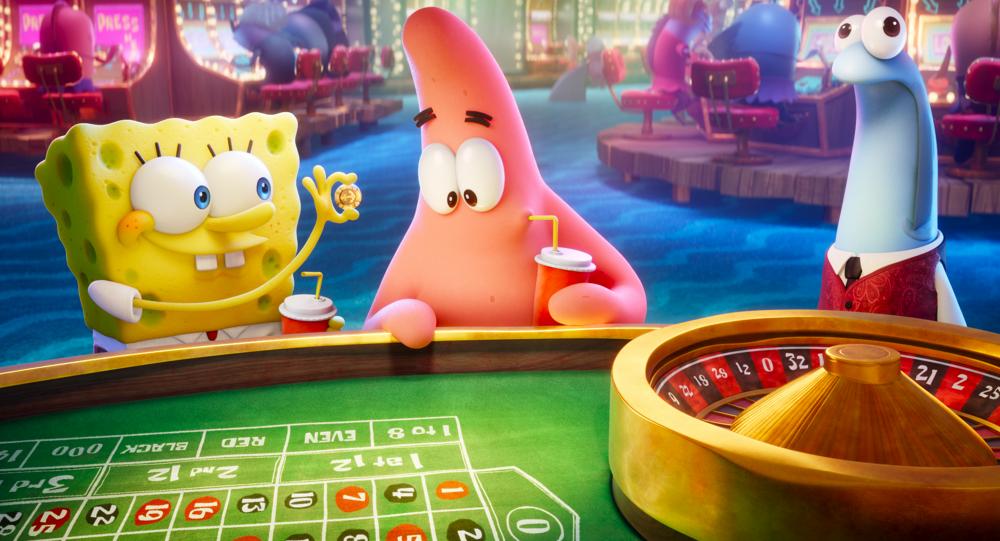
Mikros Magic
To animate the project, the studio tapped Mikros Image Animation (Captain Underpants: The First Epic Movie, The Little Prince) with the production mainly done in the Montreal studio. “It was a bit of a learning curve because they are a digital studio and they don’t come from a 2D world,” says Hill. “We were looking for snappy animation, because it’s more comedic that way. We took the time to get everybody up to speed with the style. One of the show’s original timers went to Montreal to help them with the timing, and they got pretty good.”
According to Hill, the film’s background also presented some challenges since a lot of the show’s sets were more graphic. “For example, a wall would be just a color, but we had to make it all dimensional and put lighting on it and make it a little tactile and real. We had to do stuff with the lighting like caustic and atmosphere and rays coming from the surface to keep it feel like the water is moving round and affecting the plant life. All of those things give it a little verisimilitude and give you this feeling that they all live in a fish tank.”
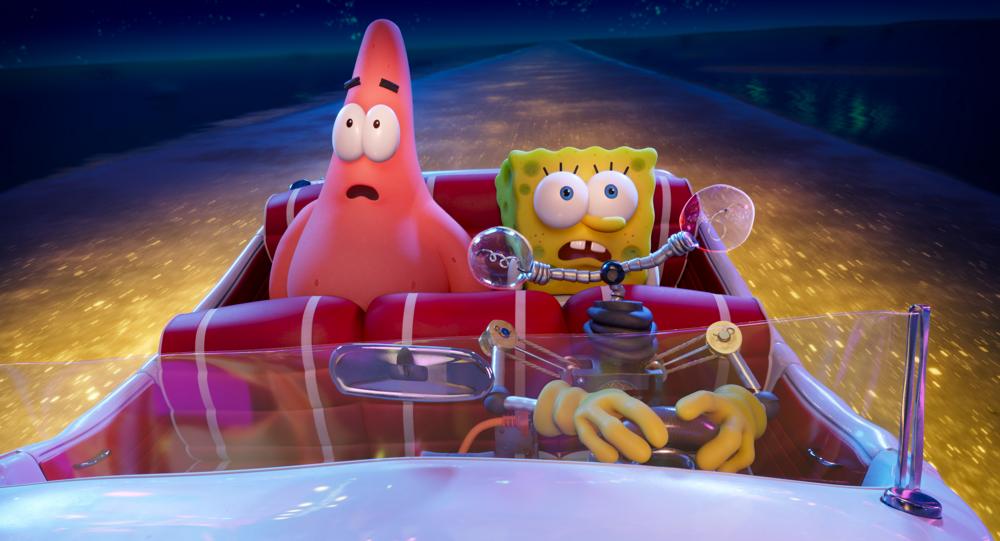
Of course, there is always the issue of how to make a CG-animated version of the characters look and feel like their 2D counterparts. As Hill explains, “We had to be very subtle with our character modeling and surfacing. For example, we had to figure out how to treat SpongeBob’s shadow side: Does it go green like it does on the show? We had to be careful with the way SpongeBob’s flat top can become too angular if you use the wrong lens. Or take Plankton: He is a kind of a cell organism, so you have to have transparency, but also a little bit of a wet surface. It’s all about dialing it in until it looks right. You just know when it looks right.”
Hill also points out how important the overall colors of the movie were in the whole process. “SpongeBob is such a vibrant show, but in this CG world, the colors get saturated very quickly, so we have to weed out a lot of the specularity,” he notes. “You know, this is my first fully-animated feature, so I’m just telling you what I learned!”
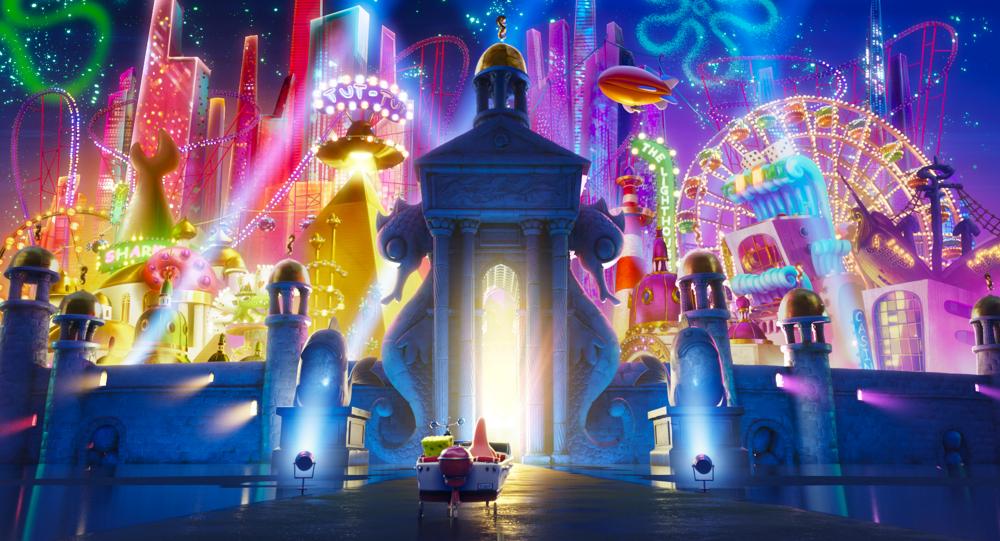
Building a Better Sponge!
Sponge on the Run’s animation supervisor Jacques Daigle says he feels like he’s been living in Bikini Bottom for the past 28 months. He and his team at Montreal’s Mikros Animation have been working hard to make sure SpongeBob and his pals look as funny, cartoony and tactile in CG as they do in 2D. “We had all three first seasons of the series to look at to understand all the timing techniques,” says the animation veteran, whose many credits include Cloudy with a Chance of Meatballs, The Little Prince, The Smurfs 2, Mune: Guardian of the Moon and The Star.
“One of the most important things for our team to understand was the timing techniques of the show, which is crucial in comedy,” says Daigle. “Tim Hill and some of the other animation directors on the show trained us to really understand the timing. Our team at Mikros was very open and excited to make the project as honest as possible, and not try to reinvent anything.”
Daigle, who worked with about 80 people in the animation department at the Montreal studio, says the most important thing was to ask the right questions about the final goal. “In terms of the designs of the camera in 3D, we really cheated to the camera a lot,” he notes. “Comedy has to be in your face, so we ended up forcing the perspectives a lot. After all, SpongeBob is a square, so sometimes the top of his head would be hidden in CG. There’s a comfort zone where you can add all your cheats and get away with it, and it doesn’t become too noisy or questionable. It’s funny, because the original show is in 2D, which is all about drawing to make the world look 3D — while we have a 3D movie, which we wanted to make look like a 2D show. It was a cyclical argument!”
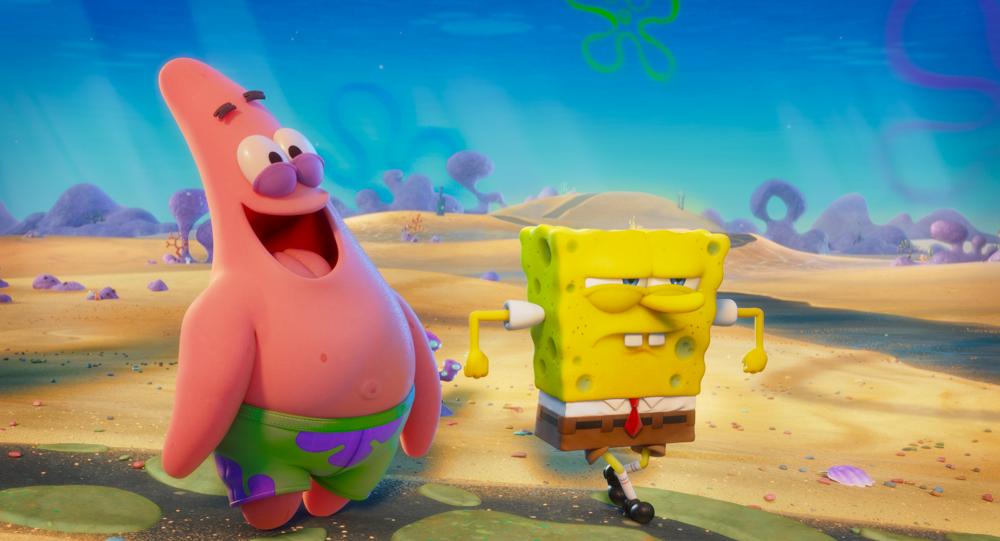
“Because of perspectives and the camera, [SpongeBob’s] back limbs looked smaller, for example, so we had to beef him up,” adds Daigle. “SpongeBob is a different Bob in every single shot. We had to simply trust the system and the original rules we were given. Why use six poses when you can just use two or three poses in five seconds to make it work? You don’t need that extra blink. We really tackled it as if we were working in hand animation. It was all about making it snappy and really understanding the language of SpongeBob. We used Maya, but we built a lot of specific tools for the movie, because there was a lot to figure out!”
Daigle says the whole experience was a great exercise in restraint for all the animators involved. “We are used to moving everything, but we just had to accept that we don’t move everything all the time. Tim Hill was relying on us to provide the comedy in our animation. He would give us a slight nudge and we’d sit down and talk about how to make it as funny as possible. We were all so proud of working on this movie. It was such a special project, and every single one of us knew that this was an experience that we were all going to remember. It made us grow so much and become better as animators and as people.”
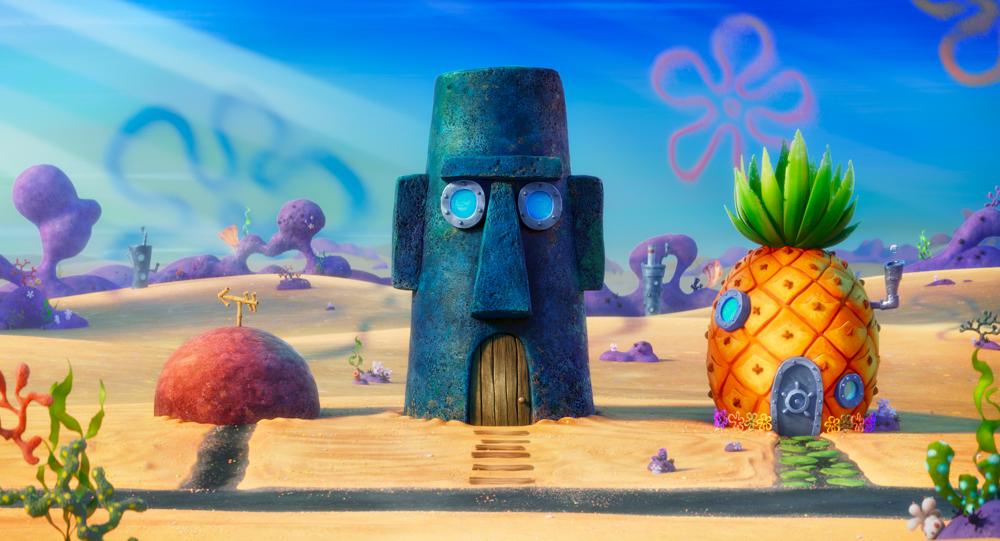
Live-Action Surprises
The movie also features about 12 minutes of live-action footage. Hill says this was a strategy to give the audience something special, an element that would really make it a cinematic experience for everyone. “When you have a popular IP like SpongeBob, that has had so many episodes and two movies already, you have to think about things that will excite people and get them to come see it on the big screen.”
Hill says it was a good thing that all the live-action footage, the animation and the dialog was done by the time the entertainment industry had to shut down because of COVID-19 pandemic precautions. “By the time you’re done with the animation, it’s usually just the director dealing with the editor, putting in new shots or adjusting them,” he explains. “The movie was originally scheduled for May, so most of the work was done. It just made it a little hard to do real-time notes and editing and the music. But we were just doing the post stuff — final lighting, music, effects and dubbing. We got lucky!”
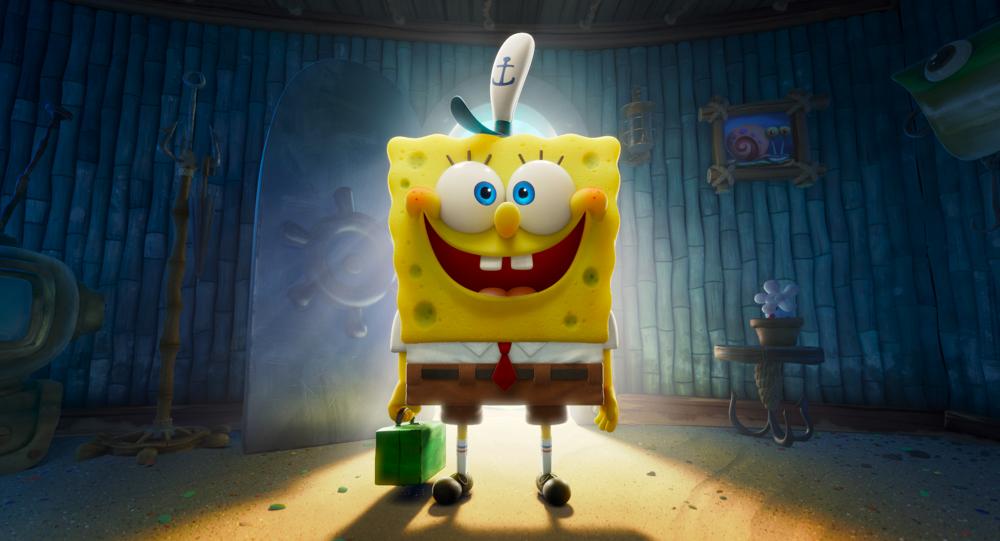
When asked about the timeless appeal of SpongeBob, Hill believes it’s the intelligence, heart and playfulness at the core of the show that has made it such a phenomenal success over the years. “It’s always about friendship and relationships,” he says. “The show also comes up with creative solutions and surprising ways SpongeBob gets around things. The characters remind me of those wonderful silent movies in a way. They all work so well together. It’s truly a wellspring that Steve created and gave the world.”
Paramount is scheduled to release The SpongeBob Movie: Sponge on the Run on August 7. The movie might be available on VOD if theaters remain closed due to the COVID-19 pandemic.



